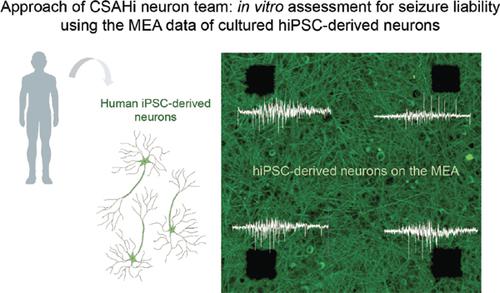Current Pharmaceutical Biotechnology ( IF 2.2 ) Pub Date : 2020-06-30 , DOI: 10.2174/1389201020666191129103730 Takafumi Shirakawa 1 , Ikuro Suzuki 1

|
Neurotoxicity, as well as cardiotoxicity and hepatotoxicity, resulting from administration of a test article is considered a major adverse effect both pre-clinically and clinically. Among the different types of neurotoxicity occurring during the drug development process, seizure is one of the most serious one. Seizure occurrence is usually assessed using in vivo animal models, the Functional Observational Battery, the Irwin test or electroencephalograms. In in vitro studies, a number of assessments can be performed using animal organs/cells. Interestingly, recent developments in stem cell biology, especially the development of Human-Induced Pluripotent Stem (iPS) cells, are enabling the assessment of neurotoxicity in human iPS cell-derived neurons. Further, a Multi-Electrode Array (MEA) using rodent neurons is a useful tool for identifying seizure-inducing compounds. The Consortium for Safety Assessment using Human iPS Cells (CSAHi; http://csahi.org/en/) was established in 2013 by the Japan Pharmaceutical Manufacturers Association (JPMA) to verify the application of human iPS cell-derived neuronal cells to drug safety evaluation. The Neuro Team of CSAHi has been attempting to evaluate the seizure risk of compounds using the MEA platform. Here, we review the current status of neurotoxicity and recent work, including problems related to the use of the MEA assay with human iPS neuronal cell-derived neurons, and future developments.
中文翻译:

使用人iPSC神经元进行神经毒性的方法:使用人iPS细胞进行安全性评估的联盟。
在临床前和临床上,由于施用测试物品而引起的神经毒性,心脏毒性和肝毒性被认为是主要的不良反应。在药物开发过程中发生的不同类型的神经毒性中,癫痫发作是最严重的一种。癫痫发作的发生通常使用体内动物模型,功能性观察电池,欧文测试或脑电图来评估。在体外研究中,可以使用动物器官/细胞进行许多评估。有趣的是,干细胞生物学的最新发展,尤其是人类诱导的多能干细胞(iPS)的发展,使得能够评估人类iPS细胞衍生的神经元的神经毒性。进一步,使用啮齿动物神经元的多电极阵列(MEA)是识别诱发癫痫的化合物的有用工具。日本药物制造商协会(JPMA)于2013年成立了使用人iPS细胞进行安全评估的联盟(CSAHi; http://csahi.org/en/),以验证人iPS细胞衍生的神经元细胞在药物中的应用安全评估。CSAHi的Neuro Team一直在尝试使用MEA平台评估化合物的癫痫发作风险。在这里,我们回顾了神经毒性的现状和最近的工作,包括与人类iPS神经元细胞源性神经元使用MEA分析有关的问题以及未来的发展。org / en /)由日本药品制造商协会(JPMA)于2013年成立,旨在验证人iPS细胞来源的神经元细胞在药物安全性评估中的应用。CSAHi的Neuro Team一直在尝试使用MEA平台评估化合物的癫痫发作风险。在这里,我们回顾了神经毒性的现状和最近的工作,包括与人类iPS神经元细胞源性神经元使用MEA分析有关的问题以及未来的发展。org / en /)由日本药品制造商协会(JPMA)于2013年成立,旨在验证人iPS细胞来源的神经元细胞在药物安全性评估中的应用。CSAHi的Neuro Team一直在尝试使用MEA平台评估化合物的癫痫发作风险。在这里,我们回顾了神经毒性的现状和最近的工作,包括与人类iPS神经元细胞源性神经元使用MEA分析有关的问题以及未来的发展。











































 京公网安备 11010802027423号
京公网安备 11010802027423号